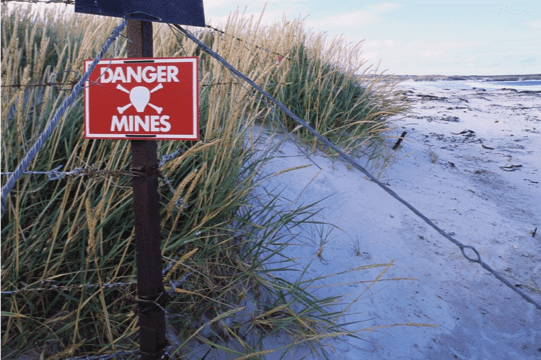This blog is the first in a 4-part series that takes a detailed look at the SD-WAN trade-offs that commonly emerge during a network transformation project–and more importantly, how to avoid pitfalls.
To encourage you to read on, or take a detour for important background information, here are two things we won’t be covering (with quick links for more information):
- This is not a What is SD-WAN? technology primer.
- It’s also not an enumeration of SD-WAN benefits.
Indeed, at this point, it’s a foregone conclusion that the branch router we’ve known and loved (or loved/hated, perhaps) has outlived its primacy. It’s also generally understood that a Software-Defined WAN (SD-WAN) is much more apt to take you, your network, and your company where you need to go in the next decade.
Is SD-WAN all unicorns and rainbows?
SD-WAN sounds great in theory. But is there a catch? According to Gartner, only 20% of enterprises have successfully adopted SD-WAN in at least some of their remote sites to date. Why not more enterprises? Why not more sites? Doesn’t SD-WAN equate to network nirvana? And isn’t it supposed to be easy?
To cut the suspense, the answer to this question is an emphatic, “No!” SD-WAN alone won’t take you to network nirvana. There are major pitfalls, the most common of which come in the form of unfortunate trade-offs that all-too-often emerge and can reduce or even decimate the benefits you were seeking to gain with SD-WAN in the first place.
Here are the three most common trade-offs that you will undoubtedly face:
Enterprise SD-WAN trade-off #1: destination vs. journey
Is transitioning to SD-WAN more trouble than it’s worth?

We all want SD-WAN. But it’s impossible to transform the old into the new all at once. And so, you have to traverse an intermediate phase–the brownfield–where some sites are connected via SD-WAN and others remain connected via conventional routers. The difference between navigating this phase unscathed and bringing your network to a screeching halt has everything to do with the ability of the SD-WAN solution to interface with your existing network and cope with its topological complexities, one-off hacks, and special-case router configs that have built up over time. Those hidden network demons that have been lurking unnoticed will inevitably (thanks, Murphy!) rear their ugly heads once the transformation is underway.
Part 2 in this blog series will share important information about best practices and critical SD-WAN features that will increase your chances of success as you navigate the minefield of the brownfield.
Enterprise SD-WAN trade-off #2: cost vs. performance
Is it possible to maintain WAN capacity and increase app performance?
Some of you might be thinking, “Wait! I thought more network capacity equated to better app performance.” Well, like most things in life–it depends. Sometimes more capacity absolutely leads to better application performance. Sometimes more capacity does absolutely nothing to improve application performance. And sometimes, adding capacity actually reduces application performance! Woah, not good.

Part 3 in this blog series takes this topic head-on and will offer fresh insights into the following:
- How can I tell if and when app performance will improve by adding more bandwidth?
- Why on earth could adding more bandwidth actually reduce application performance?
- If bandwidth isn’t bottlenecking app performance, what is? Latency? Link quality? How can I tell?
- Is app performance being dictated by the behavior of networking protocols, or application protocols, or both?
- And, most importantly, once I understand the true causes and conditions of insufficient app performance, what are the best tools, techniques and technologies available that can improve the situation?
Enterprise SD-WAN trade-off #3: user experience vs. security
Is it possible to meet user expectations and maintain network security?
One benefit of SD-WAN is that it makes it easy to steer certain traffic from remote sites toward your on-premises data centers and steer other traffic from remote sites directly to the Internet. Once selective traffic steering is made easy, there’s less of a reason to backhaul Internet-bound traffic from remote sites through your data center. Doing so only adds latency between users and their Internet-hosted apps and adds unnecessary traffic on your network. Instead, steer Internet-bound traffic directly from the branch to the Internet. Less latency. Less overall network traffic. Better performance.

The problem, of course, is that by steering traffic directly from the branch to the Internet comes with it the cost of increasing the threat perimeter of your network. You’ve traded off network security for app performance.
Part 4 in this blog series will investigate remedies for this situation, including some nuances that might not be so obvious:
- What are the best ways to effectively protect the edges of my network without breaking the bank?
- And what if I have to continue backhauling Internet-bound traffic due to regulatory compliance or corporate policy? Is there a way to overcome the negative effects of higher latency?
Summary
Let’s close out by returning to the title of this blog, “Is SD-WAN a piece of cake?” The answer, as you might expect is, yes … and no … and yes!
- Yes – relative to managing conventional routers, SD-WAN is a quantum leap in the direction of simplicity and agility. However…
- No – the benefits of SD-WAN do not appear magically on their own. Without careful planning and attention to the pitfalls that can arise during this transformation of your network, your project will not feel anything like “a piece of cake.” And so…
- Yes! – if you are mindful of the trade-offs, you can have your cake and eat it too. This is when you’re on the true path of wisdom that will ultimately lead to SD-WAN success.

We hope you enjoy this series and that it helps you tackle your SD-WAN project with greater confidence, even ease. For my part, I’m going to find a delicious piece of cake. And I’m going to eat it!
Nothing could be simpler.
